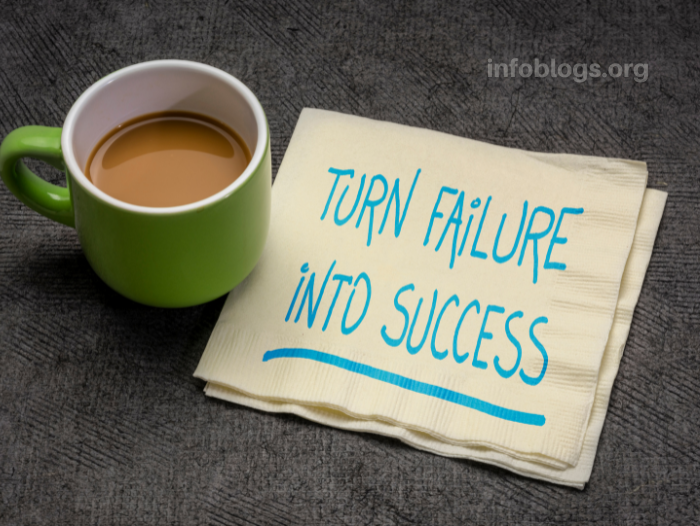
Jun 2, 2023 | Misc
To achieve overall well-being, it is crucial to maintain a healthy heart. A diet that promotes heart health plays a significant part in reducing the risk of heart disease and promoting cardiovascular wellness. Consumption of superfoods can provide powerful nutrients and antioxidants that support heart health. This article will delve into the top five superfoods that are beneficial for a healthy heart.
Salmon:
For optimal heart health, it is recommended to include two servings of fatty fish like salmon in your diet each week. This is because salmon is a great source of omega-3 fatty acids, particularly EPA and DHA, which have been proven to lower the risk of heart disease and reduce inflammation. Additionally, these healthy fats can help improve blood vessel function, decrease triglyceride levels, and lower the risk of abnormal heart rhythms.
Blueberries:
The vibrant color of blueberries is due to the presence of anthocyanins, which are antioxidants that provide health benefits. These antioxidants have been associated with a reduced risk of heart disease by reducing inflammation and oxidative stress. Blueberries also contain fiber, vitamin C, and vitamin K, all of which contribute to a healthy heart. Incorporating fresh blueberries into your breakfast cereal, yogurt, or smoothies is a tasty and beneficial way to boost heart health.
Spinach:
Packed with vitamins, minerals, and antioxidants, spinach is a green leafy vegetable that offers numerous health benefits. It contains dietary nitrates that aid in relaxing blood vessels, reducing blood pressure, and enhancing cardiovascular function. Additionally, spinach is a great source of potassium, fiber, and folate, which are essential for maintaining a healthy heart. You can incorporate spinach into your diet by adding it to salads, sautés or blending it into smoothies to enjoy its heart-protective advantages.
Walnuts:
Rich in nutrients, walnuts are a heart-healthy nut that offers an abundance of benefits. They are packed with omega-3 fatty acids, fiber, and antioxidants, making them an excellent dietary addition. Research indicates that incorporating walnuts into your diet can aid in reducing inflammation, improving blood vessel function, and lowering LDL cholesterol levels. Enjoy a handful of walnuts as a snack or sprinkle them over salads and oatmeal for a heart-healthy crunch.
Oats:
Beta-glucan, a soluble fiber found in oats, is known to reduce LDL cholesterol levels and lower the risk of heart disease. Regular consumption of oats can also aid in stabilizing blood sugar levels and promoting healthy weight management, both of which are crucial for maintaining heart health. To start your day with a nutritious and satisfying breakfast, try topping your bowl of oatmeal with berries and nuts.
Conclusion:
Including superfoods in your diet is a potent method of promoting heart health. Salmon, blueberries, spinach, walnuts, and oats contain various nutrients, antioxidants, and healthy fats that can help decrease the risk of heart disease, diminish inflammation, and enhance overall cardiovascular function. To achieve optimal heart health, it's crucial to combine these superfoods with a well-balanced diet, regular physical activity, and other heart-healthy lifestyle choices. For personalized advice and recommendations based on your specific health needs, consult a healthcare professional or registered dietitian. By nourishing your body with these heart-healthy superfoods, you're taking a significant stride towards a healthier heart and life.

Jun 1, 2023 | Health and Nutrition
Enhancing your sleep quality is crucial for your overall health and efficiency. Unfortunately, numerous individuals encounter inadequate sleep, leading to a sluggish and unenergetic morning. If you want to boost your sleep and feel rejuvenated upon waking up, this article is perfect for you. We will examine successful techniques to improve your sleep quality, guaranteeing that you start each day with a positive mindset.
Establish a Consistent Sleep Schedule:
Establishing a consistent sleep routine aids in regulating the internal clock of your body. Make it a goal to sleep and wake up at the same time every day, including weekends. This habit conditions your body to adhere to a natural sleep-wake pattern, enhancing the overall quality of your sleep.
Create a Relaxing Bedtime Routine:
Partake in calming activities prior to bedtime as a way to indicate to your body that it's time to unwind. Refrain from engaging in stimulating activities like using electronic devices or watching intense TV shows. Rather, choose peaceful activities such as reading a book, taking a warm bath, or performing gentle stretches.
Make Your Sleep Environment Conducive to Rest:
Make sure your sleeping area is conducive to sleep by keeping it cool, dark, and quiet. To minimize disturbances, consider using blackout curtains, earplugs, or white noise machines. Additionally, prioritize your comfort by investing in a comfortable mattress, pillows, and breathable bedding.
Limit Exposure to Blue Light:
To avoid disrupting your sleep-wake cycle, it's best to refrain from using electronic devices like smartphones and laptops for at least an hour before bedtime. The blue light these devices emit suppresses the production of melatonin, the hormone that helps regulate sleep. If you must use your devices before bed, consider using blue light-blocking filters or enabling nighttime mode to minimize the impact on your sleep.
Avoid Stimulants and Heavy Meals:
Your ability to fall asleep and the quality of your sleep can be disrupted by caffeine, nicotine, and consuming heavy meals close to bedtime. To prevent this, restrict your intake of caffeinated drinks and avoid eating heavy, spicy, or fatty foods a few hours before going to bed. If necessary, choose a light snack instead.
Create a Comfortable Sleep Environment:
Make sure that your bedroom is tidy, organized, and suitable for relaxation. Choose cozy bedding, regulate the temperature according to your liking, and contemplate utilizing essential oils such as lavender to encourage a peaceful ambiance.
Engage in Regular Exercise:
Better sleep quality can be achieved through regular physical activity. It is recommended to participate in moderate-intensity exercises like brisk walking or jogging for at least 30 minutes on most days of the week. It is advisable to avoid exercising too close to bedtime as it may leave you feeling energized and make it difficult to fall asleep.
Manage Stress and Relax Before Bed:
Your sleep quality can be greatly affected by high levels of stress. To prepare yourself for a restful sleep, try practicing stress management techniques such as deep breathing exercises, meditation, or journaling before going to bed. Engaging in relaxation techniques helps to soothe your mind.
Avoid Napping Late in the Day:
To prevent difficulty falling asleep or restless nights, it is recommended to refrain from taking late afternoon naps. Daytime naps may disrupt your ability to sleep at night. However, if you feel the need to nap, it is advisable to limit it to a brief power nap earlier in the day.
Seek Professional Help if Needed:
If you have been unsuccessful in resolving your ongoing sleep issues despite trying different methods, it may be beneficial to consult with a healthcare expert. They can evaluate your situation, offer advice, and treat any underlying sleep disorders or ailments that could be impacting your sleep patterns.
Conclusion:
To achieve a healthy and productive lifestyle, it is crucial to prioritize the quality of your sleep. By incorporating these techniques into your daily routine and giving proper attention to your sleep, you can significantly improve its quality and wake up feeling revitalized and energized. It is important to establish a consistent sleep pattern and create an environment that promotes relaxation to experience the full advantages of a restful night's sleep.

Jun 1, 2023 | Health and Nutrition
Boosting your immune system is essential for maintaining good health and wellness. Although there are no quick fixes for becoming completely immune to illnesses, there are several natural approaches you can take to support your immune system. This article will examine ten effective methods to naturally boost your immune system, enabling you to remain healthier and more robust.
Eat a Balanced Diet:
Boost your immune system by consuming a well-balanced diet that is abundant in fruits, vegetables, whole grains, lean proteins, and healthy fats, which offer vital nutrients and antioxidants. Ensure that you incorporate immune-boosting foods such as citrus fruits, garlic, ginger, spinach, and yogurt into your everyday meals.
Stay Hydrated:
Boosting your immune system requires consuming a sufficient amount of water. Proper hydration aids in eliminating harmful substances, promoting the generation of immune cells, and preserving wet mucous membranes to protect against harmful microorganisms.
Prioritize Sleep:
It is essential to have enough sleep to maintain a healthy immune system. While sleeping, the body undergoes cell repair and regeneration, and the immune system becomes stronger. To boost immune function, strive to get 7-8 hours of quality sleep every night.
Manage Stress Levels:
To maintain a healthy immune system, it is important to manage chronic stress. This can be achieved through various techniques such as meditation, deep breathing exercises, yoga, or engaging in hobbies. By reducing stress levels, you can decrease your susceptibility to infections.
Regular Exercise:
Engaging in physical activity is beneficial for both weight management and immune system enhancement. It is recommended to participate in at least 150 minutes of moderate-intensity exercise or 75 minutes of vigorous exercise per week. It is important to choose activities that are enjoyable, like walking, jogging, swimming, or cycling.
Vitamin D:
To maintain a strong immune system, it is important to ensure sufficient intake of Vitamin D. This can be achieved by either spending time outside to receive natural sunlight or by taking a Vitamin D supplement, particularly in the winter season when sunlight exposure is limited.
Avoid Smoking and Limit Alcohol:
To enhance your immune system's ability to combat pathogens, it's essential to quit smoking and restrict alcohol intake. Both smoking and excessive alcohol consumption can weaken your immune system, rendering you more susceptible to infections.
Stay Active and Practice Good Hygiene:
To minimize the risk of transferring pathogens, it's important to wash your hands with soap and water for at least 20 seconds on a regular basis, particularly before eating and after using the restroom. Additionally, it's recommended that you avoid touching your face. It's also important to clean and disinfect surfaces that are frequently touched.
Stay Socially Connected:
Your immune system can benefit from maintaining healthy social connections. Participate in social activities, spend quality time with people you care about, and seek emotional support when necessary.
Consider Herbal Supplements:
It is thought that certain herbal supplements, including echinacea, elderberry, and ginseng, can enhance the immune system. It is recommended to seek advice from a healthcare expert to ascertain if these supplements are appropriate for you and to talk about the correct dosage.
Conclusion:
It is thought that certain herbal supplements, including echinacea, elderberry, and ginseng, can enhance the immune system. It is recommended to seek advice from a healthcare expert to ascertain if these supplements are appropriate for you and to talk about the correct dosage.

May 31, 2023 | Personal Development
Although failure is often viewed negatively as a sign of inadequacy or defeat, it has been embraced by successful individuals and innovators as a stepping stone to success. Rather than allowing setbacks to define them, they use failures as opportunities for growth, learning, and resilience. This article will delve into the benefits of embracing failure and offer techniques for turning setbacks into success stories.
Reframe Failure as Feedback:
Instead of perceiving failure as a personal inadequacy, consider it as a constructive critique. Each obstacle presents a chance to gain knowledge, adjust, and enhance. Alter your outlook to acknowledge failure as an inherent component of acquiring knowledge. Welcome failure as an educator that imparts understanding and crucial lessons for forthcoming accomplishments.
Learn from Mistakes:
Spend some time pondering your failures and uncovering the insights they offer. Evaluate the mistakes you made, consider alternative actions you could have taken, and take note of the lessons learned. Utilize this newfound knowledge to improve your strategy and make more informed choices moving forward. By gleaning lessons from failure, it can act as a driving force for both personal and professional development.
Cultivate Resilience:
Having a resilient mindset means being able to recover from failures and setbacks. To develop resilience, it is important to recognize that failures are temporary and do not determine your value or potential. View challenges as chances to enhance your strength and adaptability. Foster self-confidence, positivity, and persistence when facing adversity. Resilience empowers you to handle setbacks with resolve and come out even stronger in the end.
Embrace the Growth Mindset:
Develop a growth mindset by believing that with dedication and effort, abilities and intelligence can be improved. View failures as opportunities for progress towards success. Welcome challenges, explore new learning opportunities, and persevere in the face of obstacles. A growth mindset enhances motivation and instills confidence in the ability to transform failures into achievements.
Refocus and Set New Goals:
In the event of a failure, it is crucial to redirect your attention and establish fresh goals. Utilize the knowledge acquired from the defeat to redefine your course of action. Modify your tactics, establish feasible expectations, and pinpoint practical measures towards your updated targets. Failure presents a chance to redirect your endeavors and make progress towards achieving your personal definition of success.
Seek Support and Learn from Others:
Do not hesitate to reach out to mentors, peers, or a supportive community for help. By sharing your experiences and learning from those who have overcome similar obstacles, you can gain valuable insights and guidance on how to turn failures into success stories. Always keep in mind that you are not alone on your journey.
Embrace Innovation and Creativity:
Setbacks can serve as a springboard for inventive solutions and imaginative ideas. Take advantage of these moments to break free from conventional thinking, experiment with fresh strategies, and question established norms. Failure has the potential to ignite innovation by driving you to seek out unconventional routes and discover untapped possibilities. Harness your creativity to turn defeats into triumphs.
Take Calculated Risks:
Calculated risks are crucial for attaining significant success. Accept failure as a natural outcome of exploring new territories and venturing beyond familiar territory. Reduce risks by conducting extensive research, seeking guidance from professionals, and developing contingency plans. Embrace the belief that failure is not the end goal but a vital component of the path to extraordinary accomplishments.
Celebrate Progress and Small Wins:
While you travel towards your goals, take time to acknowledge small victories and progress. Recognize the lessons learned and personal development, even if success is not yet attained. Remember that setbacks are a natural part of the journey and that every little step taken brings you closer to your ultimate destination.
Conclusion:
The mindset of embracing failure can transform setbacks into stepping stones towards success. When you view failure as feedback, learn from your mistakes, build resilience, adopt a growth mindset, refocus and set new goals, seek support, embrace innovation and creativity, take calculated risks, and celebrate progress, you can turn setbacks into inspiring success stories. Keep in mind that failure is not the end but rather an opportunity for growth and future triumph.

May 31, 2023 | Personal Development
Innovation, problem-solving, and personal growth are all fueled by the powerful force of creativity. By harnessing our creative potential, we can discover fresh ideas, diverse perspectives, and effective solutions. Creativity is not exclusive to a chosen few; it is a learnable and developable skill. This article delves into the process of unlocking innovative thinking and offers practical techniques for cultivating creativity.
Embrace a Growth Mindset:
To unleash creativity, it is crucial to cultivate a growth mindset. This involves acknowledging that creativity is not set in stone, but rather can be honed and enhanced through consistent effort. Confront challenges head-on, perceive setbacks as chances to learn, and approach unfamiliar circumstances with an inquisitive attitude and openness to unexplored domains. By embracing a growth mindset, one can access boundless creative prospects.
Foster an Inspiring Environment:
Establish a setting that nurtures ingenuity and inventiveness. Encircle yourself with triggers that spark your thoughts, such as paintings, melodies, or the outdoors. Allocate a specific area for imaginative pursuits where you feel at ease and stimulated. Reduce interruptions and create a schedule that enables uninterrupted moments of innovative exploration.
Practice Divergent Thinking:
Creativity heavily relies on divergent thinking. This means coming up with a multitude of ideas and options without any criticism. To enhance divergent thinking, participate in brainstorming sessions, mind mapping, or free writing exercises. Let your thoughts flow freely and create unusual associations. Be open to unconventional notions and examine various viewpoints.
Seek New Experiences:
Broaden your creative thinking by immersing yourself in novel experiences and viewpoints. Venture to unfamiliar locations, experiment with untried pursuits, delve into varied cultures, or interact with individuals from diverse backgrounds. By venturing beyond your customary boundaries and encountering fresh stimuli, you can ignite original concepts and activate imaginative thinking.
Cultivate Curiosity:
Develop a curious and fascinated outlook towards the surroundings. Inquire, question preconceptions, and investigate multiple aspects of an issue. Curiosity stimulates the search for information and ignites fresh concepts. Greet each day with a childlike inquisitiveness, welcoming the unfamiliar and endeavoring to comprehend the world from innovative perspectives.
Embrace Failure and Iteration:
The process of being creative frequently entails experimenting and making mistakes. Instead of being discouraged by failure, view it as a chance to advance towards success and develop your skills. Analyze your setbacks and utilize them to enhance your concepts. Welcome the iterative approach, where you consistently modify and enhance your creations. Every adjustment brings you nearer to original solutions.
Engage in Mindfulness and Reflection:
You can access your inner creativity by practicing mindfulness and reflection. Dedicate some time for peaceful contemplation, meditation, or writing in a journal. Eliminate any mental clutter and distractions to make room for imaginative ideas to surface. Ponder on your thoughts, experiences, and sources of inspiration. Mindfulness and reflection create an ideal environment for inventive thinking.
Collaborate and Seek Feedback:
The combination of collaboration and feedback can greatly enhance creativity. Participate in brainstorming sessions with individuals who share your interests, exchange ideas, and seek out a variety of perspectives. Collaborative settings provide a wealth of innovative ideas and promote creative thinking. Embrace constructive criticism from others to improve and fortify your creative projects.
Embrace Constraints:
Thinking outside the box can be stimulated by embracing constraints. Unconventional approaches can be explored and innovative solutions can be sparked by limitations. Instead of considering constraints as challenges, perceive them as chances to apply your imaginative problem-solving abilities.
Practice Creative Exercises and Playfulness:
To trigger your imagination, participate in creative exercises and fun activities. Try out various art forms, engage in improvisational games, or solve puzzles. These actions stimulate your creative abilities, promote a playful mindset, and unleash your inner innovator.
Conclusion:
Developing creativity is possible through various methods such as adopting a growth mindset, creating an encouraging setting, exploring diverse perspectives, seeking novel opportunities, nurturing curiosity, accepting failure as part of the process, reflecting on experiences, collaborating with others, embracing limitations, and engaging in activities that promote creativity and fun. By implementing these practices, you can unlock your creative potential and enhance your ability to think innovatively in all aspects of your life.





